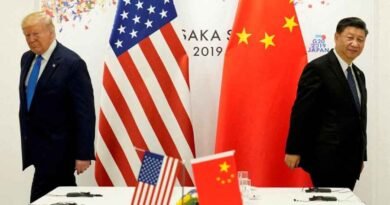Kailash card used, Depsang in limbo
The trump card has already been played as quid pro quo for Fingers. This round is win-win for both India and China
Some questions on disengagement from the Line of Actual Control (LAC) need to be asked again: Why did India withdraw from the commanding heights on Kailash range without quid pro quo like Return Status Quo Ante (RSQA) April 2020 integrally linked with withdrawal from Depsang and instead settle for vacation from just north-south banks of Pangong Tso? The answer was located in Northern Army Commander Lt Gen YK Joshi’s interviews last week; the details follow. For a year now, India has been claiming it has the skill and tenacity in high-altitude warfare, including Siachen, whereas the People’s Liberation Army (PLA) — which perhaps for the first time had occupied posts on Kailash range since 1962 — does not have similar talents. China has imposed additional deployment costs of Rs 1,000 crore, excluding Rs 20,000 crore in emergency operational acquisitions, which is a godsend as in normal course, the transactions would not have materialised.
To recap: Under the shadow of COVID-19 pandemic, China diverted the PLA on training in Xinjiang to intrude at multiple places from Depsang to Demchok across 300 km of east Ladakh. India looked like a tubelight bereft of counter-intrusion contingencies. China pushed the LAC westwards to its 1959 claim line, establishing a buffer zone at Galwan and refusing to discuss Depsang. The Galwan clash and an Indian coup de main in that order froze and nudged disengagement which secured an Indian vacation from dominating heights on Kailash range overlooking Chinese garrisons at Moldo and Spanggur lake. As in the first disengagement, it is advantage China. Beijing has imposed economic costs, transforming the LAC into LoC. While India has politically withstood China’s bullying, the perception in the neighbourhood about India’s ability to be a net security provider has been cast in doubt.
Still the Government has to be congratulated for providing, for the first time, critical operational information about the ongoing three Ds — Disengagement, De-escalation and De-induction. In the past, contradictory information would be leaked by the Government and military officials even as independent journalists claimed they had their own sources, all of which led to mammoth confusion. Last week Lt Gen Joshi, who was pilloried over last year’s multiple intrusions, explained how the disengagement deal came about following an audacious tactical operation by stealth to seize strategic heights on Finger 4 and on Kailash range on August 29/30 to turn the tables on the PLA. That these operations were on the Indian side of the LAC does not diminish their brilliance.
Elaborating, Lt Gen Joshi said placing tanks at Rezangla and Rechinla on Kailash range was the game-changer into reviving stalled talks and forcing the PLA to withdrawing from Finger 4 to beyond Finger 8. He noted that the withdrawal plan was in writing for the first time and that the talks would resume.
To be clear, details of withdrawal on the south bank are not as specific as on the north bank. In the written agreement, no mention is made of RSQA April 2020 though discussion on other friction points is included. Assuming Lt Gen Joshi has been quoted accurately, the Kailash trump card has already been played as quid pro quo for Fingers. He said no land was ceded to China, presumably referring to the Pangong lake sector and not across the intrusion sites. The field is still wide open — with India’s core concerns located at Galwan, and Depsang apparently left in a limbo without the towering Kailash heights available as a bargaining chip. This round is win-win for both India — with the vacation of Fingers — and China — securing removal of tanks and troops from Kailash range. But using the Ace of Spades in the first move is a big gamble though Lt Gen Joshi said it is not advantage in perpetuity. He called the entire episode — Indian seizure of Kailash heights and the PLA’s withdrawal from Fingers as a loss of face for China which has annoyed the Chinese.
The resumed dialogue on Saturday ended not in a written agreement but a joint statement to “push for a mutually acceptable resolution of remaining issues so as to jointly maintain peace and tranquility in border areas”. Key questions remain: Final disposition of troop separation at Galwan, Ghogra-Hot Springs, Demchok and Depsang. At Galwan, Indian troops were pushed back two-and-a-half km from their traditional patrolling point No 14 and a buffer zone created. China regards Depsang a legacy dispute and the absence of eyeball confrontation may probably preclude its inclusion from a friction point. But it is of the highest strategic sensitivity for India’s defence of the Karakoram range and an offensive towards Aksai Chin; and of vital strategic import for China for similar reasons. India could likely be left with China ensconced along its 1959 claim line, buffer zones predominantly on India’s territory, stalemate at Depsang, no RSQA April 2020, de facto loss of territory and most importantly collapse of peace, trust and tranquility along the border, the bedrock of sound and stable bilateral relations. China, on the other hand, wants decoupling of border dispute from bilateral relations. Depsang will prove to be a test case.
(The writer, a retired Major General, was Commander, IPKF South, Sri Lanka, and founder member of the Defence Planning Staff, currently the Integrated Defence Staff. The views expressed are personal.)
Source: The Pioneer




